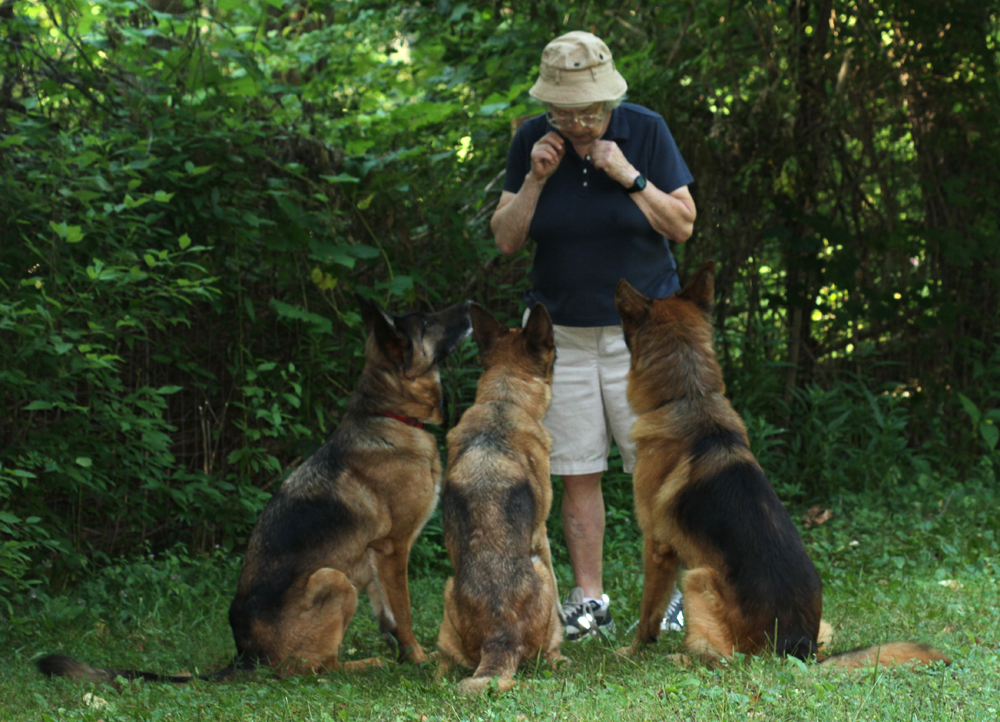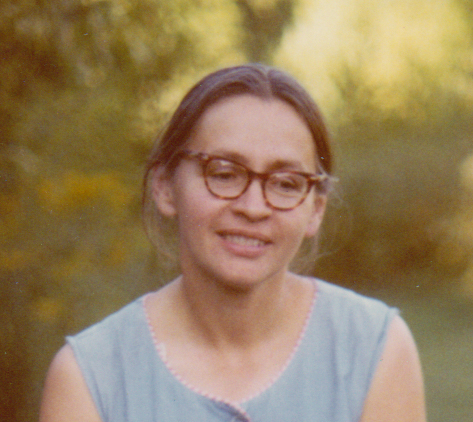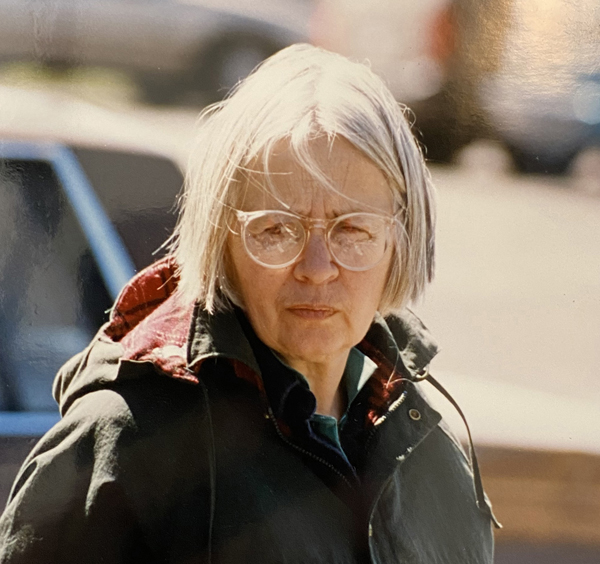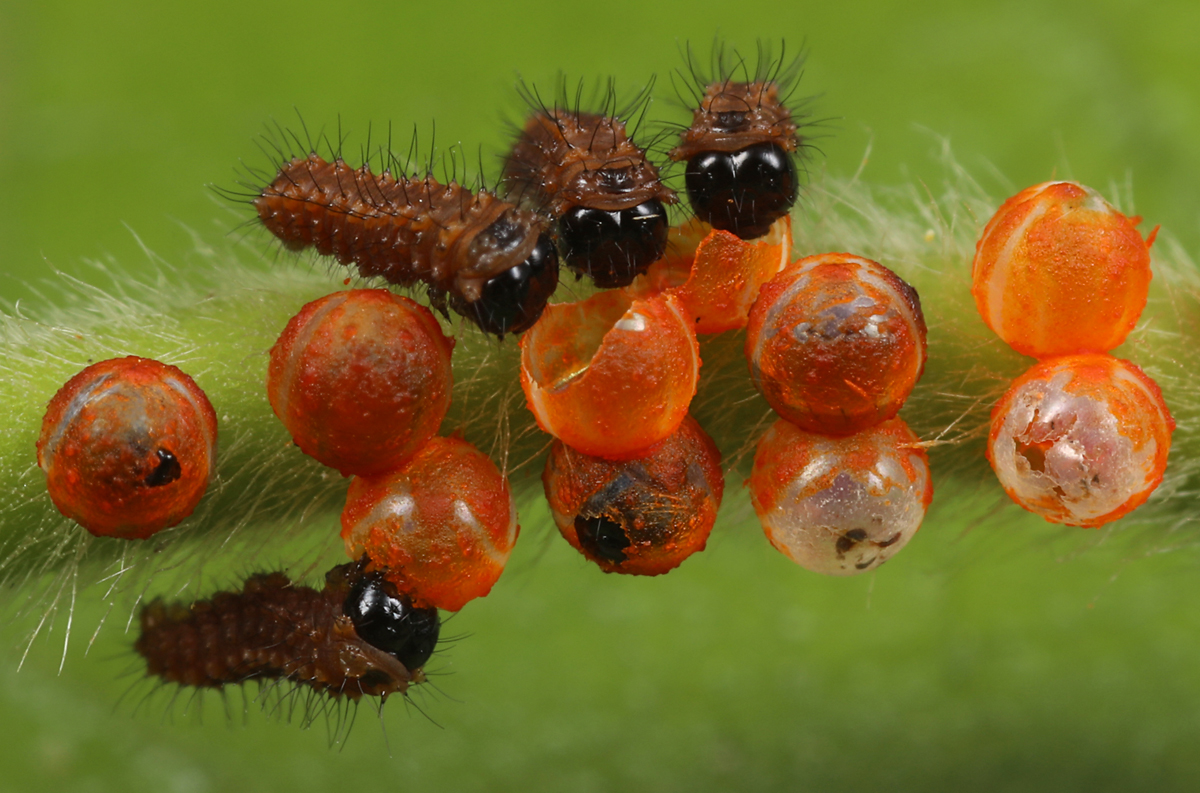
This post is about my mother, Grazyna, who died on March 25, 2022, in Ithaca, NY. My garden is 3,000 miles away from where she lived for the last 62 years and from where I grew up. She hasn’t visited in 20 years, except via Skype. Yet she is here. She is also in Europe, in Poland and Germany especially, places in many ways she never really left. She is also, I hope, in her own former yard in Ellis Hollow, Ithaca, tending to her plants and watching her dogs romp across the lawns.
The caterpillars in my yard remind me of her. I’m rearing pipevine swallowtail butterflies on my pipevine plants this year. She told me many times she hated caterpillars and thought they all should be squished. I told her that many caterpillars turn into beautiful butterflies. Did she hate the butterflies too? No, she said. But she definitely still hated the caterpillars.
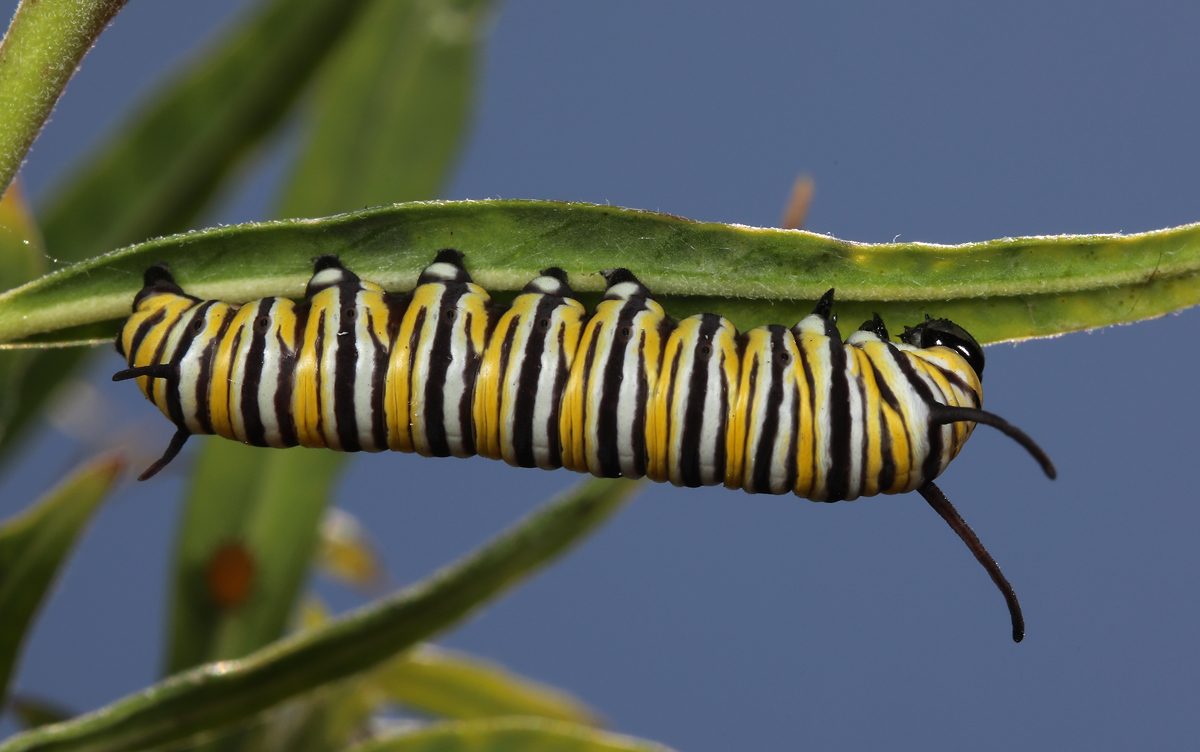
Last year she found monarch caterpillars on her two milkweed plants in her Kendal yard. They ate almost all her milkweed leaves. The caterpillars got large. She enjoyed looking for them every day. I waited for her to tell me how she wanted to kill them – or had already killed them — but Grazyna was always full of contradictions. The caterpillars survived and finally wandered away from the plants to pupate. She looked for their chrysalises but couldn’t find any. She was disappointed not to know exactly where they went, and she worried about them. She looked at her neighbors’ milkweeds to see if they had the same leaf damage as her milkweeds. They didn’t. When she saw adult monarchs flying a few weeks after the caterpillars disappeared, she was sure they were the same ones that had been on her plants. She felt honored they’d chosen her milkweeds even though there were so many others nearby. [See footnote below.]
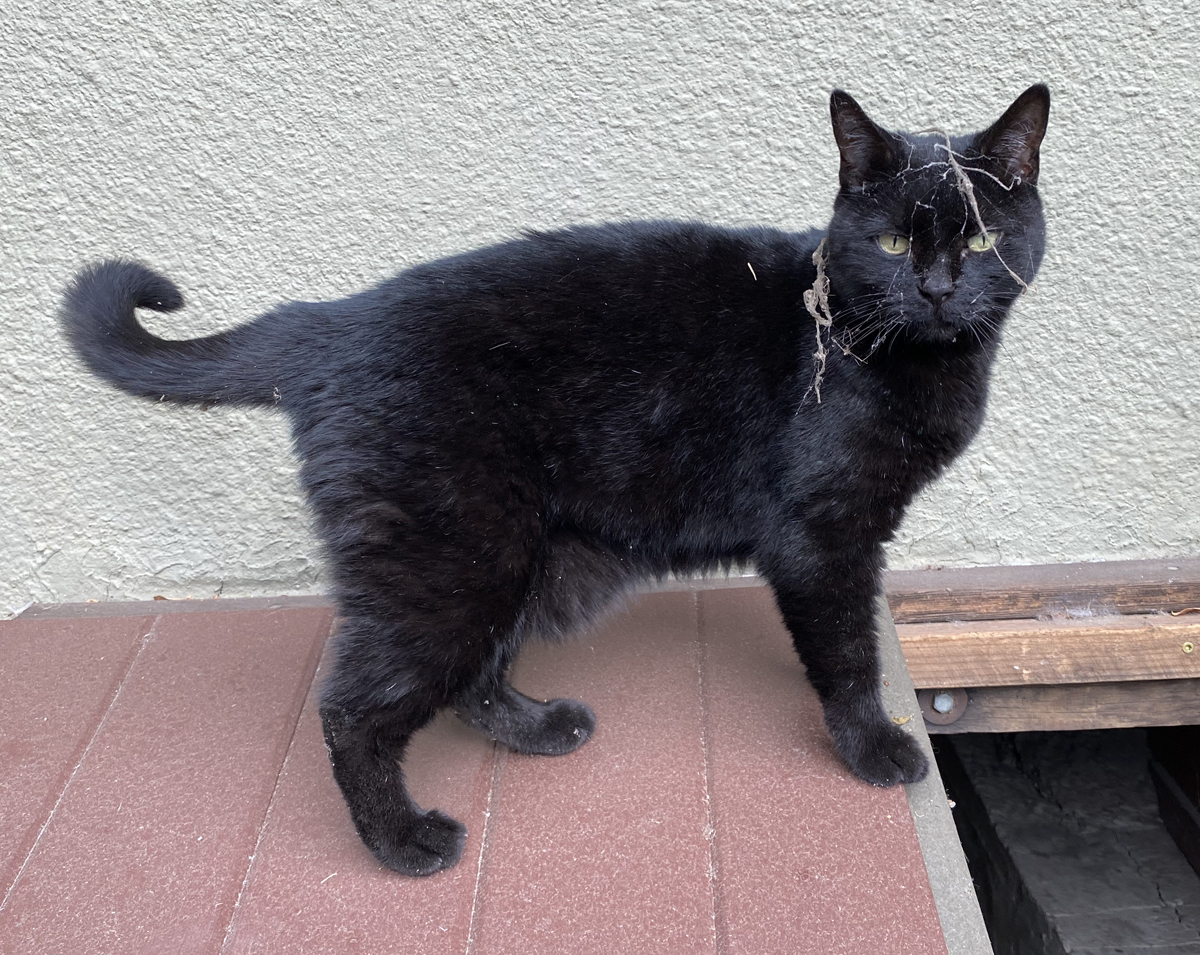
Grazyna hated cats. We did not have any when I was growing up – we had dogs, which she loved. Yet she always wanted to see my cat when we Skyped. And the cat would usually put in an appearance, contrary as my cat is and not always friendly. My cat has personality, Grazyna would say. She also said my cat is “nasty” – but with a smile, as if she understood perfectly. Grazyna was not one to pretend that she liked you if she didn’t. There were a lot of people she didn’t like, or at least never opened up to enough for them to see her kind side.
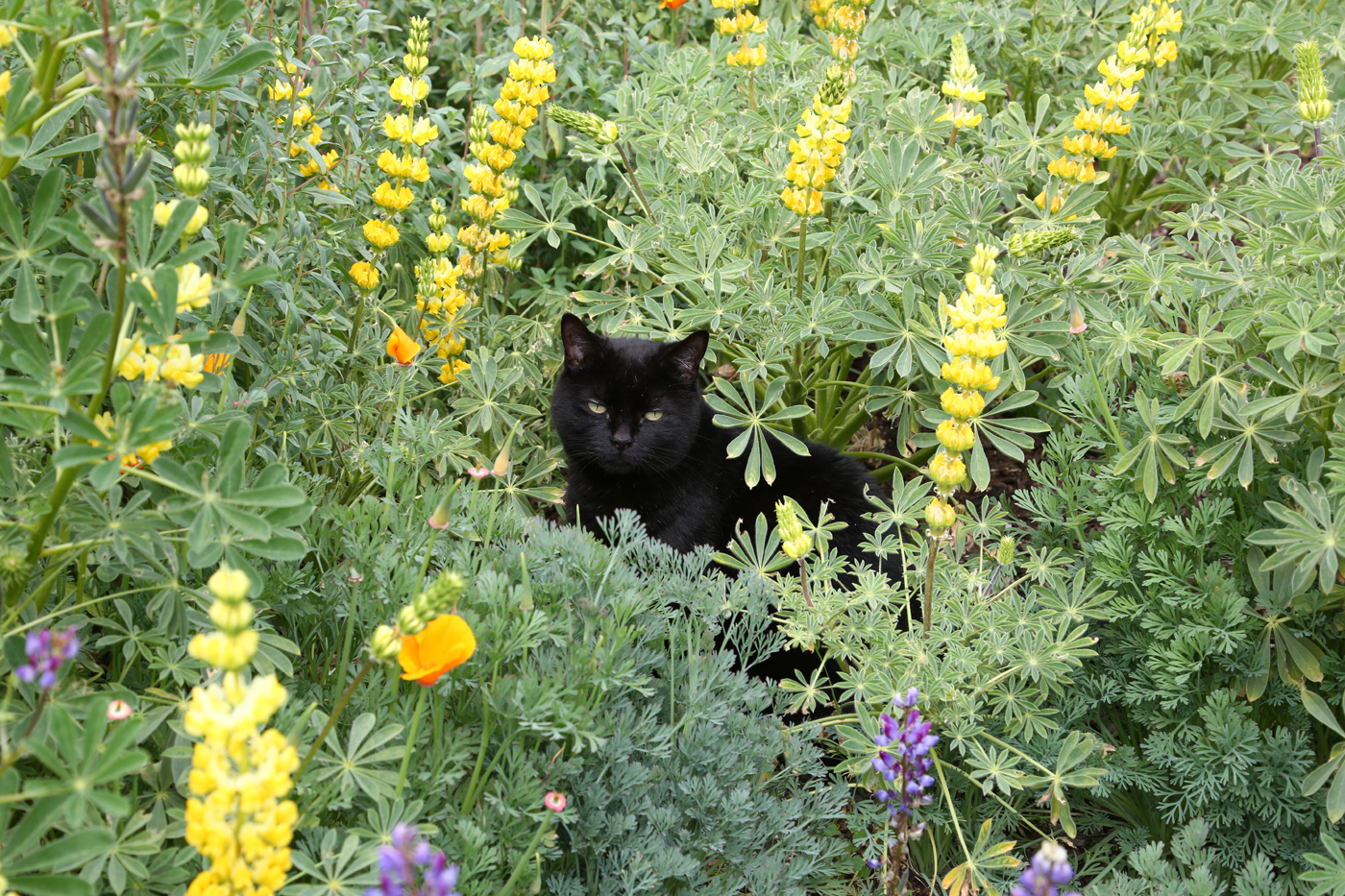
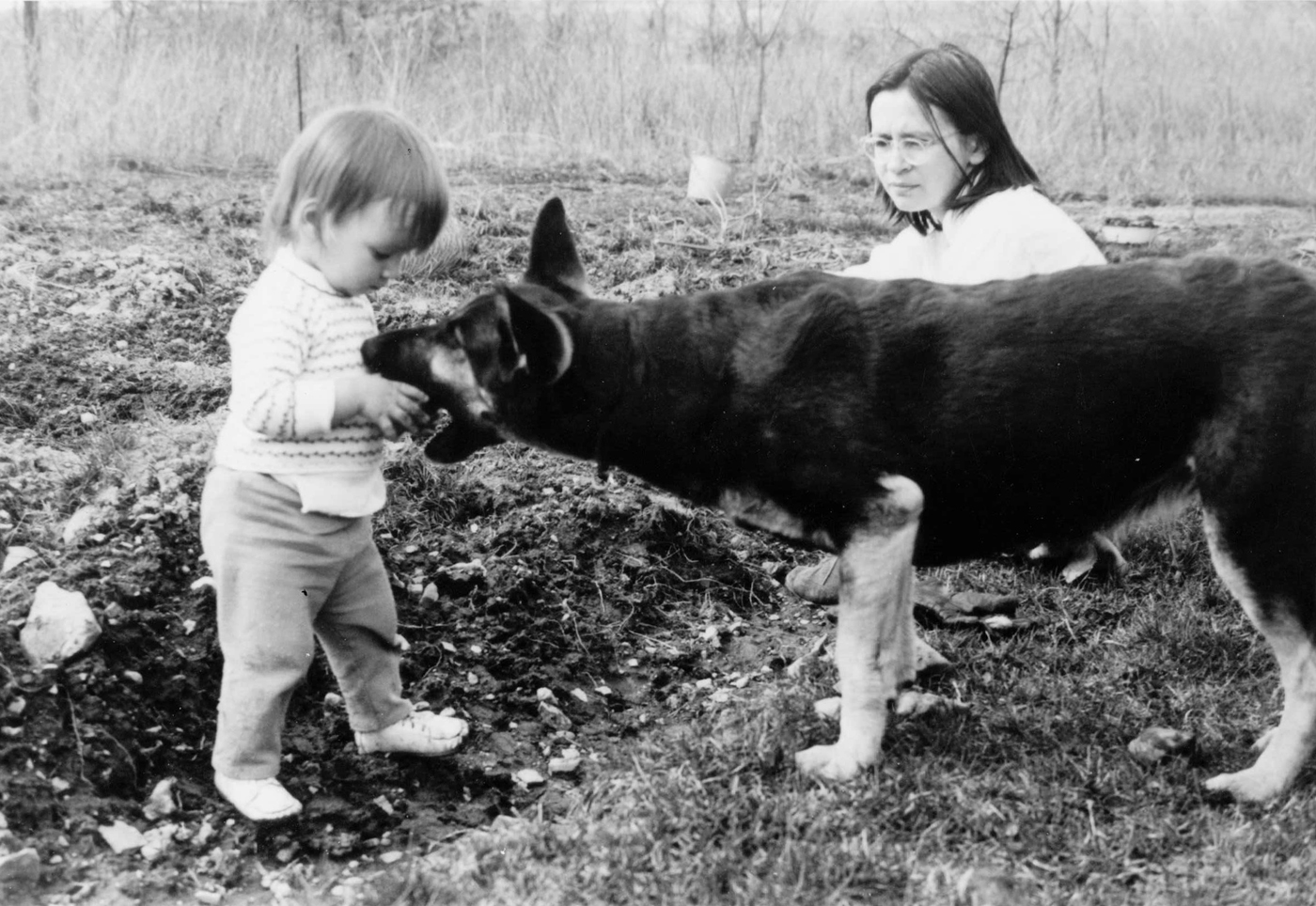
My yard has a memorial to my German shepherd Volpo: a punctured basketball and small plastic squeaky balls with painted-on smiley faces, his favorites that would light up his eyes. I got Volpo as a puppy from my mother in 1999 near the end of the many decades that she raised German shepherds. Over the course of her life in Ithaca, she whelped 25 litters, each puppy individually cared for and documented, put to the best of her ability into good and loving homes. Some of the people who got puppies from her became her lifelong friends. Grazyna would usually keep one dog from each litter with which she would do obedience training, agility, and tracking. I did the same training with Volpo. We talked all the time during those years about dog training. While I was in California and she was in Ithaca, she taught me over the phone to train Volpo to track – to follow the scent of a person a couple of hours after they had walked through a field or woods, finding objects the person dropped along the way. When I finally met some Bay Area people who tracked, they were astounded that Volpo and I knew how to track only from phone calls and the rest from having laid tracks for my mother when I was growing up.
I would usually try not to point the camera towards Volpo’s memorial in my yard on our Skype calls, because it was too sad for both of us. Volpo was my closest pal, handsome, noble, and kind. I still feel as if his soul is here at my house, perhaps inside the cat who showed up in my yard after Volpo died and who follows me around the way Volpo did. Grazyna greatly missed all her dogs, especially after the last one died in 2018 and she didn’t want to have any more, in preparation for her eventual death. The dogs had been a huge part of her life while I was growing up. I hope she’s once again with Zoonie, Yoshy, Wisla, Visnia, Uta, and all the dogs that preceded them, giving them her special baked liver treats and watching them race happily through the woods and over green Ithaca lawns. Preferably lawns and woods the way they were during the early part of our lives in Ellis Hollow: not yet infested with deer ticks carrying Lyme-disease causing bacteria.
As Grazyna got older, she gardened more. She doted on her plants in Ellis Hollow, knew the quirks and needs of each one. I’ve added gardening to my list of hobbies, too. I wish I could show my mother how my shelling peas are coming along, and how the yard is filled with flowers now because it’s the height of spring in California. Can she see my yellow lupines and orange poppies from where she is?
While digging the endless bindweed (Convolvulus arvensis) from the soil around my plants, before it wraps itself around everything and is much harder to extract, I wonder if my mother has read the latest issue of Harper’s magazine and is keeping up with events better than I am while pulling bindweed. If anyone can read after she is dead it would be her. Wherever she is now, has she been able to find news sources covering world events that she doesn’t consider propaganda and leave her seething mad?
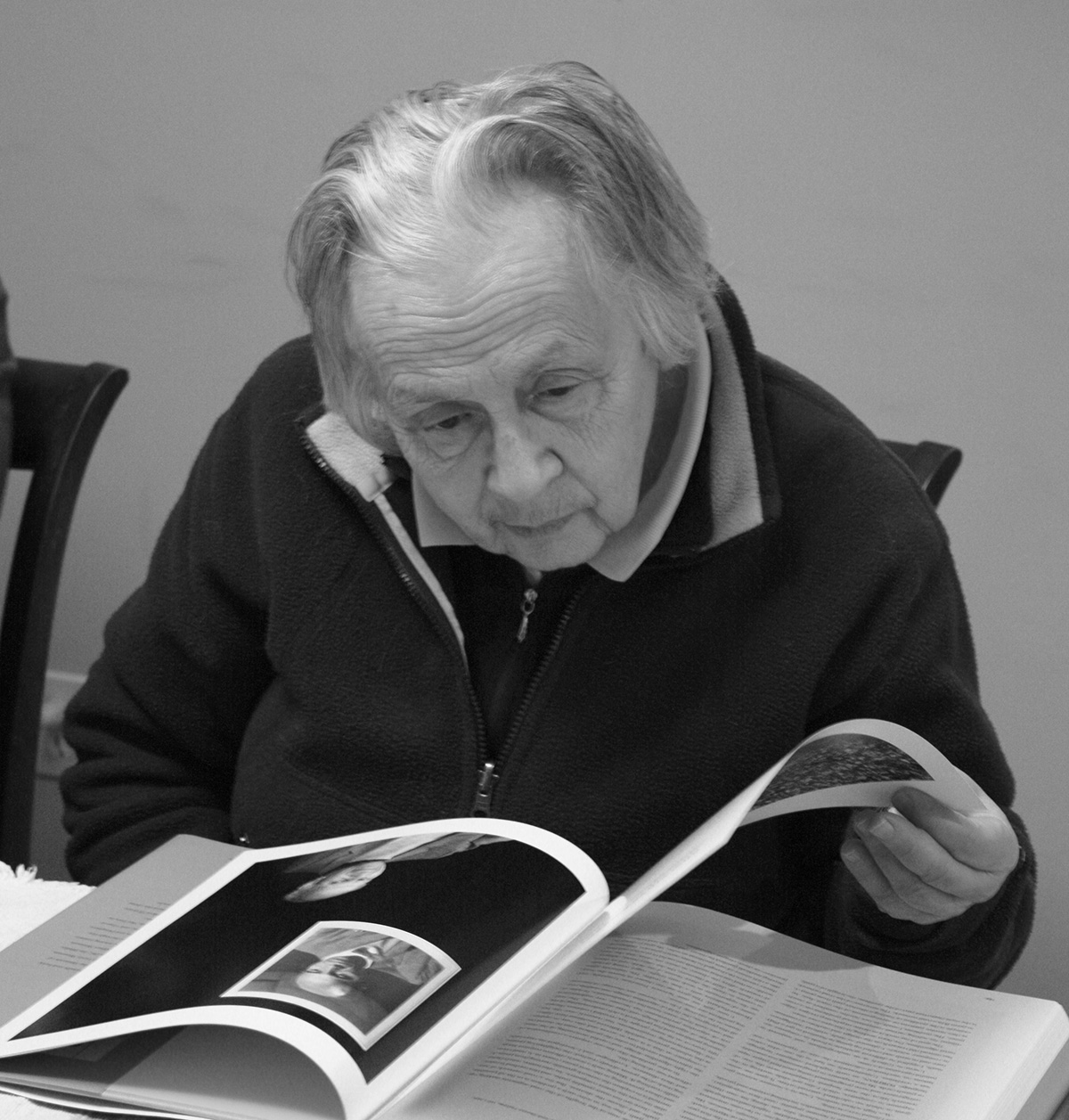
I’ve been fortunate never (yet) to experience war. War and escaping from it defined her life. While growing up, I listened to phonograph records she played of Polish war songs, bombs going off in the background of the songs. Being happy was a sign of being an American – which unfortunately I was. It could be confusing for me.
Grazyna was born in Poland in 1931, her parents from Catholic families. Her father became a judge after his family was chased off their Moldova estate during the Russian Revolution. During Grazyna’s first eight years she lived in various towns where her father worked or went to school: Sarny (in Poland then; now in Ukraine); Wołożyn and Oszmiana (both in Poland then; now in Belarus), and Vilnius (in Poland then; now in Lithuania). She ended up back in Vilnius right before the start of World War II. Her one sibling, brother Henryk, died before the war began from scarlet fever after coming down with strep throat. To escape the Russian front, Grazyna and her parents fled to Warsaw. Soon after, they fled to Krakow, where my mother spent most of the wartime years. Her father joined the Polish Resistance and eventually was captured by the Nazis. He died in Nazi concentration camp Bergen-Belson in January 1945.
As the Russian soldiers spread west, Grazyna and her mother continued to flee, first briefly to Prague then to Germany at the end of the war. They lived in a refugee camp in Regensburg for two months, then in the nearby town of Fürth im Wald for the remaining time of Grazyna’s stay in Europe. She attended German high school in Cham and learned German, along with catching up with all the years of school she had missed during the war. She was pulled out of high school in April, 1949, just before graduating, when her mother decided to emigrate to the United States. They ended up in Bismarck, North Dakota, where, Grazyna always pointed out, the state tree is a telephone pole and there were no bookstores. Despite the disruptions to her schooling and having to learn yet another language (English), Grazyna earned a master’s degree in mathematics from the University of Chicago.
My garden is testament that not all of America is like Bismarck, North Dakota. For one thing, it has trees. My neighborhood is culturally and ethnically diverse. Yet as I carefully unwrap the bindweed vines from the peas and the monkeyflowers, I know my piece of America is very different from where she grew up, the places whose histories span not only centuries of great art and important scientific discoveries but also terrible wars that shifted country borders and displaced or killed millions of people. I like to think that she is back in all the places she loved, with the people and places she lost at too young an age. And her dogs are with her and no bombs are falling.
My mother would hate that I’ve written about her, but as she has said many times, she doesn’t give a shit what happens after she dies. I miss her.
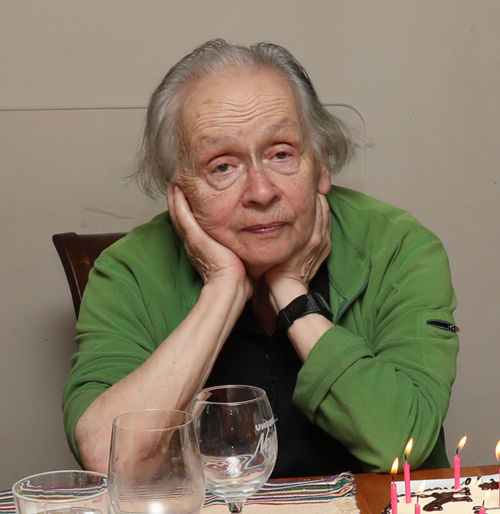
Footnote: Ironically, there’s a huge population explosion this year in the Ithaca area of gypsy moths (Lymantria dispar dispar). These are non-native moths whose caterpillars (immature stage) can be very destructive, defoliating many kinds of trees. After a couple of trips to the woods I wanted to kill them all. Sometimes my mother was right. The trick is knowing which caterpillars are to blame.


